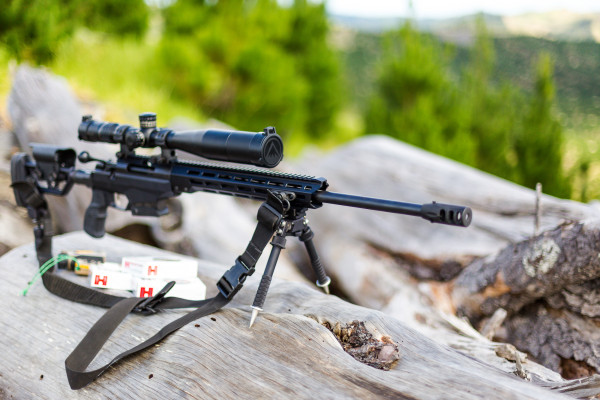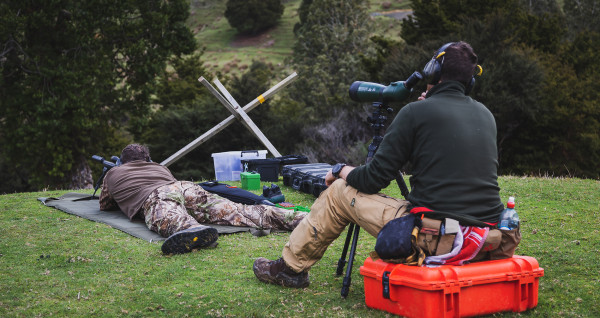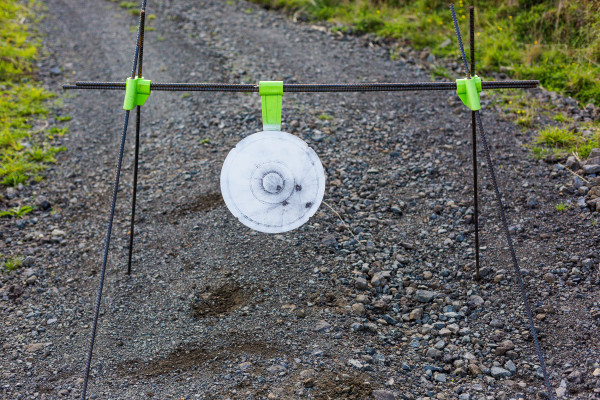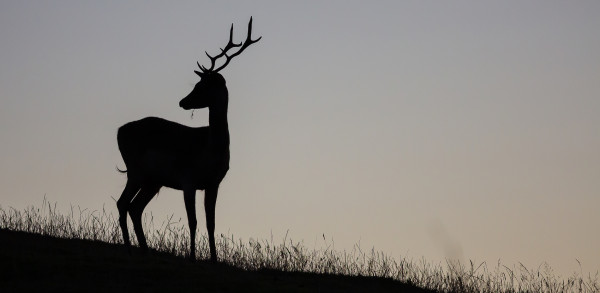Understanding Your Limits, Becoming More Successful
If you are looking to get into Long Range Hunting, I think one of the very first questions you need to ask yourself is ‘why’. Why do you want to take longer shots at animals?
GUEST BLOGGER: KERRY ADAMS
If it’s because you want to see how far you can shoot, then perhaps a better option is to look into long range field shooting – a sport that has grown massively in popularity over the last few years – with regular events happening up and down the country. This provides the perfect opportunity to test your skills, learn your limits, and practice the craft of shooting. In fact, I would suggest, that until you have hit a target at distance, you need to be very wary of shooting at any living animal. Long Range Hunting shouldn’t be about the distance. It should simply be another tool in your toolkit that might be called upon if the opportunity to get closer doesn’t present itself.
We asked Kerry Adams from Goodblokes.nz to share his advice and things you should consider on safe and effective Long Range Hunting to help those who are looking to take their skills to the next level. This could be for such activities as varmint hunting or alpine game, either way – the knowledge and practice applied ahead of entering the field can help keep you and others safe:
Long Range Shooting can be risky – despite all your best intent – environmental factors, namely wind, can ruin the best aimed, best setup, best geared up shooter’s day. For the animal, it could mean painful wounding and a slow death. If you can get closer, get closer. But for certain animals, in certain environments – that’s simply not an option.

Successful long range hunting is a combination of gear skills and lots of practice
Get the gear (and you) sorted
If you are planning on considering a longer-range shot, then the first thing you need to do is ensure that all your equipment is functioning well and you get an accurate understanding of limitations of it.
Head down to the range. You should expect to spend a bit of time at the range honing your skills and mastering your craft before contemplating taking that shot. Ensure your firearm is properly zeroed, get a realistic understanding of how well, you, shooting like you would in the field (which potentially means getting off that bench and losing the heavy rests!) can actually shoot.
It’s very nice to have a firearm that can shoot tiny little groups off the bench-rest – however – that’s not necessarily a realistic picture of how you shoot. It’s how you shoot that counts in the field.
There is actually a very useful (and humbling) test you can do to properly understand how well your shooting is going. Do a search for the Kraft Challenge. 12 shots, can be done at 100 metres or yards on a paper target – and potentially will tell you more about your shooting than all the little groups in the world.

Practice makes perfect. It's not just about the gear.
Understand the fundamentals
Everyone likes to harp on about the fundamentals of shooting, repeating off military doctrine or the latest YouTube video they watched – but the simple fact is, understanding how you effect the rifle’s performance, minimising any negative influence you might have, and practicing until you can consistently, repeat that level of performance on demand is a key skill for any hunter to have. Regardless of the distance you plan on shooting, knowing how to shoot is going to make you a more efficient, more ethical hunter.
Consider, if you never have, taking a class. Join the local club, get involved in a few shooting matches – hone your skills before you need to put them into practical use.
Understand external ballistics
If you plan on shooting far, you need to know how. Knowing what happens to the bullet once it leaves your barrel means more accuracy in the field. There is a near infinite amount of resources about this out there now. Books, videos, podcasts, courses and classes. You don’t need to become a rocket scientist to do this, but, there is certainly some of the maths involved.
Gone are the days of simply ‘holding 2 inches over the shoulder’ and hoping for the best. Modern equipment, modern techniques allows us to become a lot more refined and therefore accurate in our shooting.

Competition is a great practice ground for ethical hunting.
Understand Terminal Ballistics
Terminal ballistics( what happens when your projectile hits something) is critical to your success as a long-range hunter. If you are not likely to ethically kill what you are trying to shoot at, then you can’t consider that shot.
Modern projectiles have moved away from solely relying on weight to impart enough physical energy into an animal to kill them. Expansion has become the name of the game – creating large enough wound channels that the animal bleed out quickly. Expansion, and the ballistic tips that helps cause it – rely on velocity to expand properly.
It used to be the case that many people would say you needed so many ft.-lbs. to be considered ethical. These days, velocity at impact is also used. For example – take the Hornady ELD-X Projectile – Hornady state that you need to be hitting at 1600fps minimum to still be getting acceptable results.
Oh, and of course, the wind
The wind is the true humbler out there. And nothing provides knowledge about that better than shooting in it. Did I mention Field Shooting Competitions already?

Always check your firing zone. At long range angles become large
If you are surprised
I often think of a statement that the great Steven Rinella once made about taking a shot at an animal – it was along the lines of – “If you take the shot and you were surprised you hit, you probably shouldn’t have taken the shot. If you take the shot and you were genuinely surprised you missed, well, sometimes that’s just hunting.”
Continue your learning for the mountains:
- Check out Kerry’s blog at goodblokes.nz for more information on firearm education and techniques. Or check out his other blogs on our website.
- What lies between you and your target? Remember to always think about your firing zone when selecting a target, close up or long range.
- What happens if you hit it? Can you retrieve the animal safely in difficult terrain, is there a river or a hidden gorge?
- Have a second pair of eyes before you take the shot, have a mate on watch binoculars to help with details on successful or unsuccessful shots.
- Alpine hunting? Make sure you’re ready for the challenge with essential skills for this activity type.